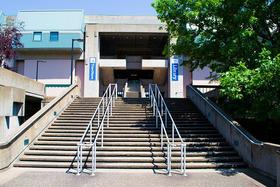The Importance of Academic Advising in Community College
Introduction
In today’s evolving higher-education landscape, academic advising has emerged as a pivotal support mechanism for students at community colleges. For many enrolling in a two-year institution, success hinges not just on coursework, but on strategic planning, timely guidance and proactive intervention. In this article, we examine why academic advising matters for community college students, update the discussion with 2025 data and policy considerations, and offer insights and examples that are valuable to students, parents and educators alike.
Why Academic Advising Matters
Academic advising helps bridge intention and outcome—especially in community colleges, where students are more likely to juggle work, family obligations, remedial coursework or transfers to four-year institutions. As one commentator put it, “What students are more likely to do is meet multiple times with an adviser, and those students are more engaged and persist longer.” The Hechinger Report+1
In practical terms, advising supports:
Course selection and sequencing so that students stay on track;
Identifying transfer pathways or workforce credentials;
Connecting students to resources (tutoring, financial aid, career services);
Helping clarify goals and aligning major choice to career outcomes;
Anticipating and navigating obstacles such as holds, remedial requirements, or policy changes.
2025 Snapshot: Community Colleges and Advising Landscape
By 2025, several key trends provide fresh context:
Tuition and fees at public two-year institutions (in-district) average about $3,598 annually according to one estimate.
Students out-of-district or from other states pay considerably more—around $8,622 for public two-year institutions in one dataset.
Graduation and completion rates at many community colleges remain modest; one survey noted that a broad advising reform helped boost completion rates by 21 percentage points.
Advising delivery is evolving: many institutions offer in-person, virtual, drop-in and pathway-based advising models. For example, one community college emphasises “proactive support directly to students… connecting you to resources and fostering a sense of belonging.” cscc.edu+1
The demographics of community college students continue to reflect diversity: older students, part-time students, first-generation students and those balancing employment alongside study.
Core Functions of Academic Advising
Goal clarification and planning
When a student begins at a community college, the first task is often to clarify whether the goal is transfer to a four-year institution, workforce credentialing or certificate completion. A structured advising session will map out a term-by-term plan. For instance, one college states that advisors “assist you with academic planning, helping make sure you’ll be ready to transfer or start your career.”Course sequencing and registration management
Mis-sequenced courses are a major barrier to completion. Advising ensures prerequisites and gateway courses are taken when appropriate. Some institutions require first-term advising before registration.Transfer and workforce pathway guidance
With many community college students intending to transfer to four-year universities, advising must include articulation agreements, credit-for-prior-learning, and career alignment. One college system emphasises “degree requirements; reviewing unofficial transcripts; academic standing concerns.”Resource referral and early intervention
Advisors identify when students face academic difficulty, financial stress or personal challenges. They refer to tutoring, counseling, financial aid offices and peer-mentoring. Studies show that when students have advising contacts early and often, persistence improves.Data-informed advising and technology integration
In 2025, many institutions are using data systems to track student progress, appointment history and early warning signs. While full studies for 2-year advising technology uptake are emerging, higher-ed research indicates that advising systems with stronger personalisation correlate with better student outcomes.
Real-World Examples
At one large community college, path-based drop-ins (e.g., by discipline such as health sciences or business) have been introduced to shorten wait-times and provide specialised advising.
In rural community college settings, students reported increased self-determination when advising emphasised personal goal-setting and mentoring rather than purely transactional course selection.
A state-wide program at a large community college system reported that students in a bundled advising intervention completed more credits and had higher retention: about 80 % of Advising-supported students remained full-year, versus 72 % of their peers.
Why It Matters for Key Stakeholders
For students and parents: Understanding the role of advising helps students make smarter decisions from the start—choosing an appropriate major, mapping out costs and avoiding wasted semesters. Given the relatively low tuition at many community colleges (circa ~$3,600/year in-district) the value of strategic advising is proportionally high.
For educators and administrators: Investing in robust advising systems is not optional. Because community colleges serve diverse, fiscal-constraint populations, the institutional return on advising (via retention, completion, transfer) can be substantial.
For employers and workforce planners: Clear advising supports more efficient preparation of credentialed graduates, which is crucial in a tight labour market where community colleges play a key role.
Policy Considerations and Best Practices
Embedded advising vs ad-hoc models: Many experts now recommend embedded advising (advisors integrated by discipline or program) rather than general advisors alone. For example, one college assigns advisors based on selected academic paths.
Mandatory early advising: Requiring new or transfer students to meet with an advisor before registration can reduce course mis-alignment and drop-out. (See requirement at a New Mexico community college: “New students are required to meet with an academic advisor before registering.”) sfcc.edu
Technology and analytics: Advising systems that monitor progress, alert advisors or students when they are off-track, and support virtual or drop-in models help scale support for larger student populations.
Equity-focused advising: Given the broad mix of students (first-generation, part-time, low income), advising must be attuned to non-traditional needs—such as balancing work, family, or remedial coursework.
Transfer and credential alignment: Advising must go beyond immediate academic term to include forward planning for transfer to four-year colleges or alignment to workforce credentials.
Evaluation and continuous improvement: Institutions should collect data on advising contacts, student outcomes (credits completed, retention, graduation) and refine models accordingly. One study indicated that wide-scale advising reform was associated with a jump in graduation rates. The Hechinger Report
Challenges and Limitations
While academic advising offers clear benefits, there remain challenges:
Advisor-to-student ratios in many community colleges are high, limiting personalised attention.
Not all advising models yield significant gains unless they are well-resourced and well-implemented; one study found that prescriptive vs developmental advising made little difference unless accompanied by other supports.
Students who are part-time, working, or non-traditional may miss advising appointments or intensive support sessions; institutions must accommodate flexible scheduling and virtual options.
Measuring the direct causal effect of advising on graduation remains difficult: students who seek advising may already be more motivated, thus confounding outcome data.
Funding constraints: While tuition remains relatively modest (~$3,600 in-district) some students still struggle with cost, scheduling and capacity issues that advising alone cannot solve. Education Data Initiative+1
Looking Ahead: 2026 and Beyond
As we approach the second half of the decade, several developments will shape academic advising in community colleges:
AI-enhanced advising tools: Emerging systems (e.g., “multi-agent frameworks” for human-in-the-loop advising) promise to augment advisor capacity and personalise advice at scale.
Data-driven insights: Advising models will increasingly use analytics to predict at-risk students, optimise scheduling and integrate career labour-market data.
Expanded transfer pathways and stackable credentials: Advising will play a central role in helping students navigate modular credentials and align them to jobs or further education.
Affordable college policies: With tuition at community colleges staying comparatively low, governments and institutions may invest more heavily in helping students complete earlier; advising will be central to “on-time” completion pushes.
Equity imperatives: With a greater focus on serving under-represented and adult learners, advising models will need to be more inclusive, culturally responsive and accessible.
Conclusion
For students, parents and educators engaged with community colleges, the role of academic advising cannot be overstated. In a sector where students face complex life situations, changing labour markets and multiple possible goals, advising is the linchpin that turns intention into achievement. In 2025 and beyond, with average tuition costs remaining modest and student profiles diversifying, quality advising offers high return on investment.
As you consider community college options or support students in that pursuit, prioritise institutions that: deploy advising early, integrate advisors into academic pathways, use technology wisely and monitor outcomes. In doing so you align with the best practices of the field—ensuring that the community college experience becomes not just affordable, but effective.















